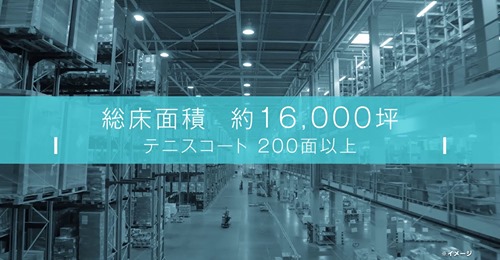
Air compressors convert mechanical energy into compressed air, serving applications across manufacturing, construction, automotive, and specialty industries. They fall into two main categories: positive displacement compressors that trap and compress air in a fixed volume, and dynamic compressors that impart kinetic energy to the air before converting it into pressure.
1. Reciprocating (Piston) Compressors
Reciprocating compressors use one or more pistons moving within cylinders to suck in and compress air. They operate in single-stage or multi-stage configurations, delivering high pressures at intermittent duty cycles.
-
Key components
-
Cylinder(s) and piston assembly
-
Suction and discharge check valves
-
Crankshaft, connecting rod, and lubrication system
-
-
Advantages
-
High outlet pressures (up to 30 bar)
-
Modular stages for pressure customization
-
Relatively low capital cost
-
-
Limitations
-
Significant noise and vibration
-
Frequent maintenance of piston rings and valves
-
Not ideal for continuous 100% duty cycles
-
-
Typical applications
2. Rotary Screw Compressors
Rotary screw compressors employ two intermeshing helical rotors (male and female screws) to continuously trap, compress, and discharge air, making them suited for uninterrupted operation.
-
Key components
-
Precision-machined twin rotors
-
Oil injection system (for lubrication and cooling)
-
Integrated separator tank and oil filter
-
-
Advantages
-
Continuous operation (100% duty cycle)
-
Lower noise and vibration than piston types
-
Higher volumetric efficiency at medium pressure
-
-
Limitations
-
Higher upfront investment
-
Complex maintenance dependent on oil quality
-
-
Typical applications
-
Large manufacturing plants and automated lines
-
Food, beverage, and pharmaceutical production
-
Central compressed-air systems for heavy-duty equipment
-
3. Rotary Vane Compressors
Rotary vane compressors feature a slotted rotor with sliding vanes that create variable-volume chambers, compressing air as the rotor turns off-center within a cylindrical housing.
-
Key components
-
Eccentric rotor and multiple vanes
-
Cylindrical casing with tight clearances
-
Oil lubricating and cooling system
-
-
Advantages
-
Smooth, pulse-free airflow
-
Compact and cost-effective design
-
Lower noise levels than piston compressors
-
-
Limitations
-
Pressure limited to around 10 bar
-
Vane wear if ingesting dusty or abrasive air
-
-
Typical applications
-
Small-to-medium workshops and machine shops
-
Laboratory and medical equipment requiring quiet operation
-
Light industrial tasks like material handling and sandblasting
-
4. Scroll Compressors
Scroll compressors use two interleaved spiral elements—one stationary and one orbiting—to trap and steadily compress air in progressively smaller chambers.
-
Key components
-
Fixed scroll and orbiting scroll
-
Sealing elements to prevent leakage between pockets
-
Direct-drive electric motor
-
-
Advantages
-
Extremely quiet, low vibration
-
Oil-free discharge delivers contaminant-free air
-
Fewer moving parts, reduced maintenance
-
-
Limitations
-
Pressure generally capped at ~10 bar
-
Higher capital cost compared to vane designs
-
-
Typical applications
-
HVAC and refrigeration systems
-
Dental and medical air supplies
-
Clean-air applications in laboratories and electronics manufacturing
-
5. Centrifugal Compressors
Centrifugal compressors accelerate air via high-speed impellers, converting velocity into static pressure through diffusers and volute casings, ideal for very large flows.
-
Key components
-
Multi-stage impellers and diffusers
-
Volute or multi-pass casings
-
Inter-stage coolers and separators
-
-
Advantages
-
Handles tens of thousands of m³/h at moderate pressures
-
Low part count, proven reliability
-
Economical for continuous, high-volume operation
-
-
Limitations
-
Large footprint and weight
-
Expensive installation and precise rotor balancing required
-
-
Typical applications
-
Petrochemical and power-generation plants
-
Large HVAC and district cooling systems
-
High-volume process air in steel mills and refineries
-
6. Axial Flow Compressors
Axial flow compressors use rows of aerodynamically profiled rotating blades (rotors) and stationary vanes (stators) to gradually increase air pressure while maintaining flow parallel to the shaft.
-
Key components
-
Multiple rotor-stator stages
-
Thrust and journal bearings with aerodynamic seals
-
Inter-stage bleed valves for surge control
-
-
Advantages
-
Extremely high flow rates (up to 100 000 m³/h)
-
Compact length-to-flow ratio, high efficiency at low heads
-
-
Limitations
-
Pressure rise limited per stage (typically < 3 bar total)
-
Complex blading and tight manufacturing tolerances
-
-
Typical applications
Comparative Overview
| Compressor Type | Mechanism | Flow Range (m³/h) | Pressure Range (bar) | Best Suited For |
|---|---|---|---|---|
| Reciprocating | Piston reciprocation | 5–500 | 1–30 | Garages, intermittent tool use |
| Rotary Screw | Twin helical rotors | 100–5 000 | 4–15 | Continuous industrial supply |
| Rotary Vane | Sliding vanes in eccentric rotor | 50–2 000 | 2–10 | Small workshops, medical labs |
| Scroll | Interleaved spiral scrolls | 10–500 | 2–10 | HVAC, clean-air, noise-sensitive settings |
| Centrifugal | High-speed impellers + diffusers | 1 000–50 000 | 1–10 | Petrochemical, power plants, large HVAC |
| Axial Flow | Multi-stage rotor-stator assembly | 5 000–100 000 | 0.5–3 | Turbine intakes, large-scale ventilation |
Understanding each compressor’s operating principle, design intricacies, and performance envelope ensures you select the optimal machine for pressure, flow, duty cycle, and air-quality requirements.
Choose the best air compressor for you from QTE Technologies. This is a leading company that offers competitive prices with the best quality. QTE Technologies is a proud global MRO provider, serving customers in over 180 countries. Established in 2010, we offer over 1 million products for every industry and technology. Additionally, you can contact us anytime via 24×7 chat support, phone, WhatsApp or email. Discover what our valued customers have to say about our services on our dedicated review page.
Post Author By QTE Technologies Editorial Staff (with a solid background in both technical and creative writing - accumulated 15+ years of experience).




